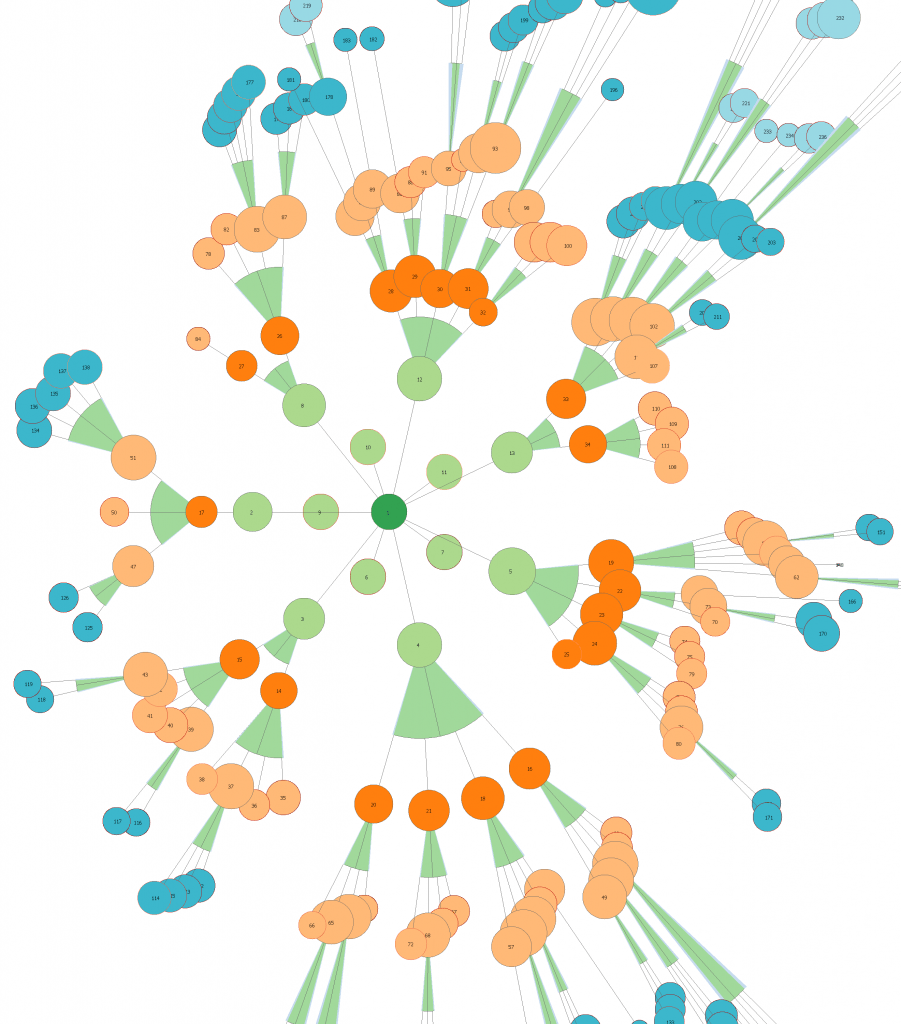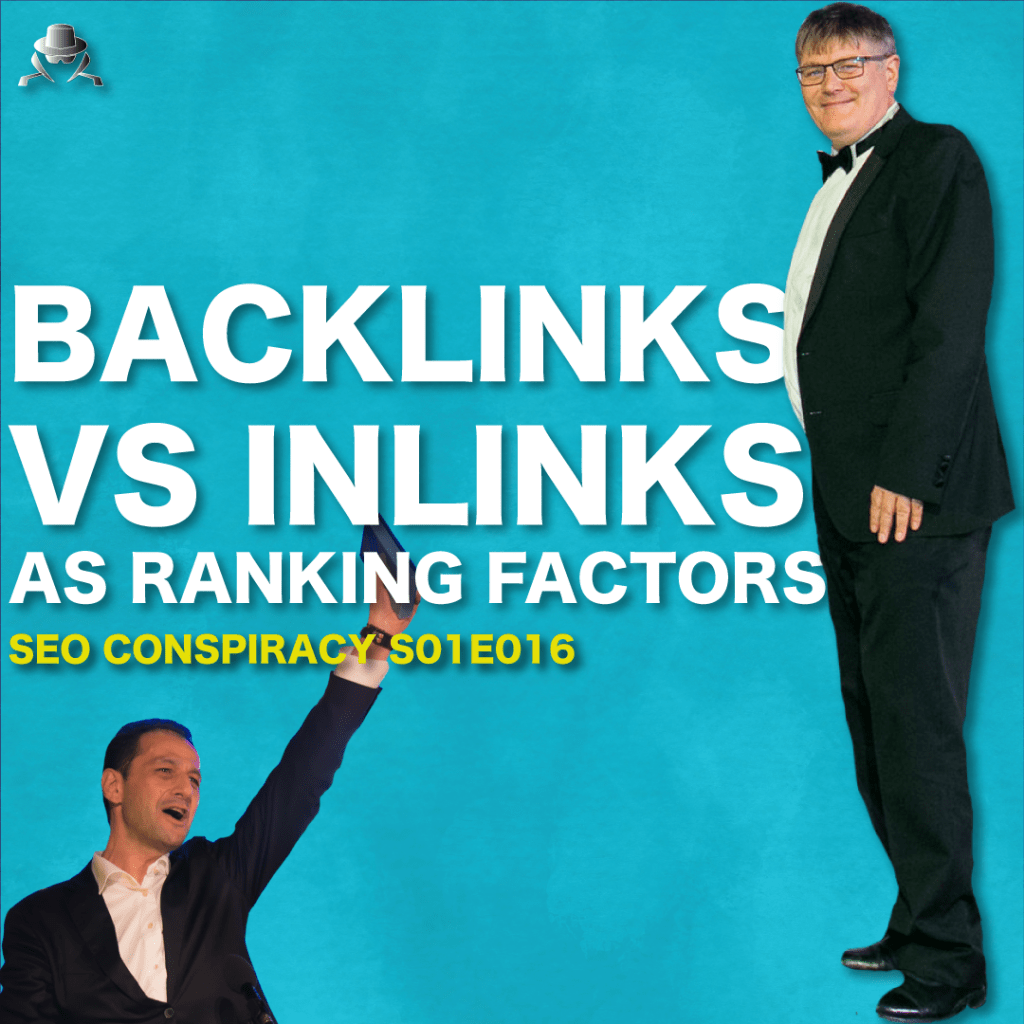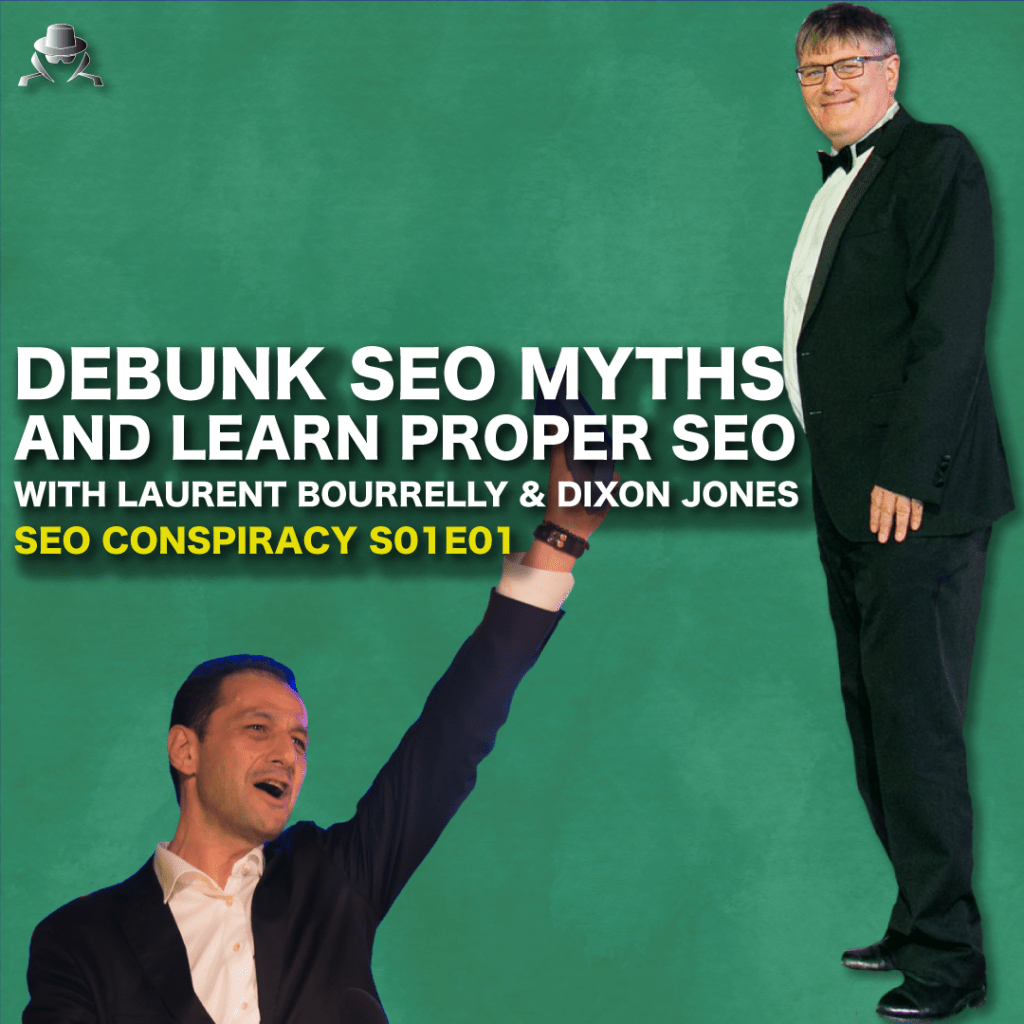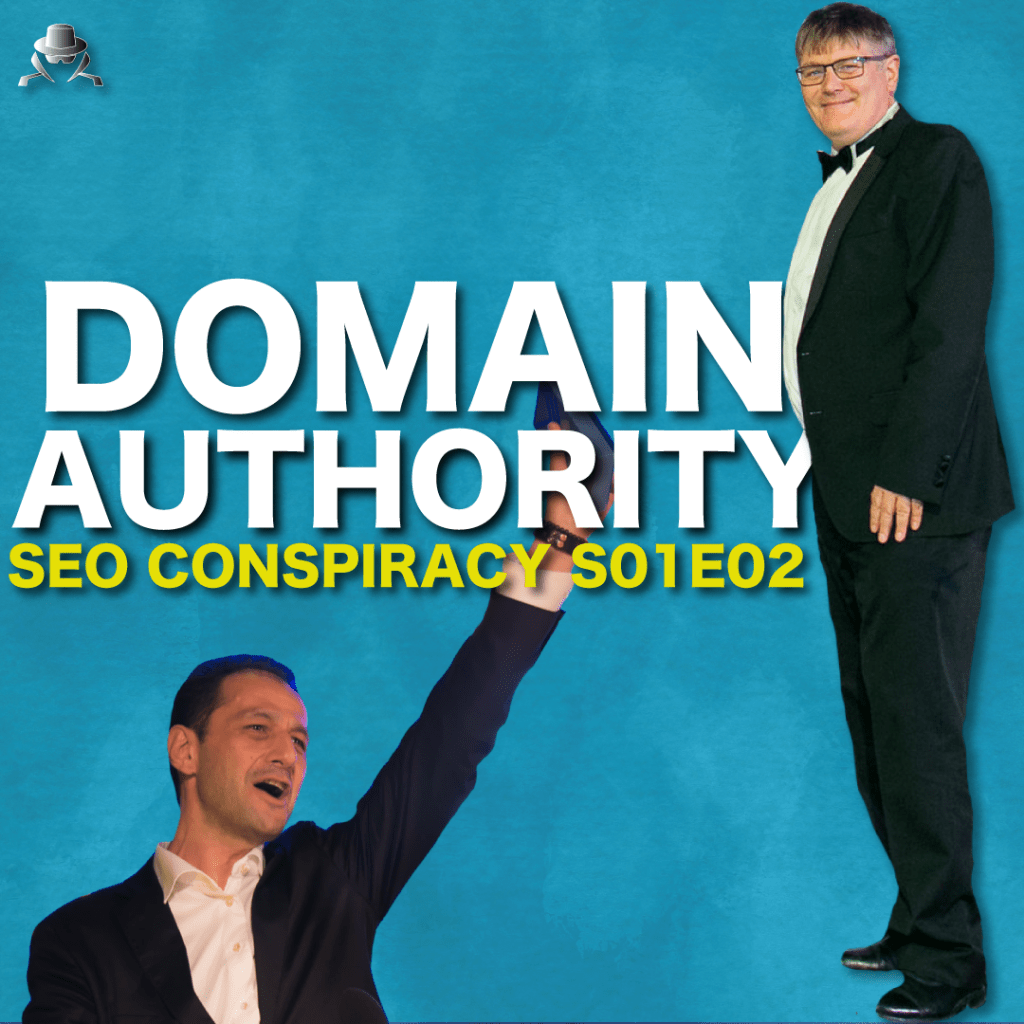Internal linking Advanced SEO Strategy 2020
SEO CONSPIRACY S01E16
Backlinks versus internal links
A link is a link but are they? Is a link a link? ?
For Dixon Jones, the conspiracy here is that backlinks are more important than internal links.
If you don’t know the difference, a backlink is a link from some other website into a webpage. An internal link is a link from a page on the same site, into the site.
In many ways they’re precisely the same thing, they’re very very similar.
There are some notable differences, though. Not necessarily by the link itself, but how tools go out and measure these things.
The primary three backlink checking tools still really great those days are Ahrefs, Majestic & Moz.
Those tools are telling you about all the backlinks, but also, Majestic does all its calculations using the internal link structures as well.
But, for a long time, they just reported the external backlinks, so people got hung up on getting backlinks from other websites because backlinks from other websites increase the overall amount of power of the pages on your website collectively in some way.
Whereas internal links just past the existing PR around.
Without links inside your website,
it’s hard for Google to discover the content
DIXON JONES
Nonetheless, it will be complicated for Google to find your content but also to give credence to the pages that it sees.
Once you’ve got to a certain level, you certainly can start using internal links to topically make each page narrower or more focused or more relevant, so both types of links are very very important.
Crawler visualization
The interesting thing is that there’s a lot of tools that will crawl all of your website and create some kind of map of your website, Screaming Frog or SEMEye.
This type of rendering:

Some tools can do that, whereas there are tools that crawl the whole Internet and then see where your website and your web pages fit into that map of the world. Those are two different perspectives.
It’s like saying: “I’m influential in my village.”
Being influential in my village makes no difference to being influential in the world. If my village is not influential in the world, if there’s no motorway to come to my village, then there’s not going to be any people in my village. It doesn’t matter what I do in my village because the rest of the world won’t see it.
I do use that analogy of a map quite a lot actually because the links within a website are essential.
So are the links coming into the website from other places. They’re different things, but in many ways, they’re measured as just a link.
LESS IS MORE
In 2013, for the first time, I explained my strategy of the Topical Mesh and my point was: LESS IS MORE.
Let’s do less links but smarter.
The public was full of mostly backlink people, and they were blown away because they realized that yes, a link is a link. I thought it was underutilized.
What we’re trying to do now and what I introduced in 2013 was the idea that you can be smarter by saying: this page is connecting to this page, like a backlink.
Instead of doing all those links, random links, try to be a little smarter in the way the pages are linked together, and it will work, it does work.
Laurent Bourrelly
Earlier, we talked about topical PageRank getting missed in the SEO psyche. Another thing that’s getting missed is the “reasonable surfer” model. Originally, PageRank meant that every link on the page was worth the same amount. You took the power of the page and divided by the number of links on the page. There’s a dampening factor, and somewhere in the model, Google had this reasonable surfer. So the way that I interpreted the reasonable surfer is that, for example, you’ve got a PageRank value 7.55. There’s a dampening factor of 7.35.
Then that cuts divided out, but instead of getting it divided out equally, for different links, we’re going to have a different value. It makes sense to think that links that are in the body text maybe are more influential because they’re more editorial than ones in the navigation, which are the same for every single webpage on the site. For example, the links in the footer no longer need the same kind of relevance because the ones above are the ones that people are going to click.
Build a smart link profile
Majestic came out with a tool last year, which is link context, it divides the webpage into four sections, and it just kicks the crap out of context it’s brilliant.
To be able to sit there and say: it’s no longer about getting a link from a page; that’s about getting a link from that sentence with this topic.
There’s a topic embedded in that sentence; there’s an entity in that sentence, etc.
You can have a page that’s a little broader, but this sentence that’s not about the main topic page but it’s talking about it and then citing your web page as the authority for users to go and read.
That’s a useful link because that is showing the user on the other page that if they want more authoritative information on this sub-topic of the page; they should come and see your website.
That is a powerful link.
But you can never spot those before you spot them because all you can see are the links coming from these pages. You couldn’t even tell whether they’re in the navigation or whether they’re in the body context. Leave alone whether they’re surrounded by other links or words or stuff that was valuable.
Give context to your links, backlinks or inlinks
Here’s a protip: don’t optimize your anchor text on the backlinks.
On the other hand, within the website, you can optimize the anchor text. Still, for the backlinks whatever comes before and after the link, it’s not as powerful as the anchor text, but it’s going to bring a lot more value to the link if it’s surrounded with something more interesting.
The reason that it does that is that those words before and after give it context.
I don’t know if Google uses this continuous bag of words algorithm anymore or not but the continuous bag of words algorithm just went through the Internet taking words, then measuring the number of times any two or three words work together on the Internet, they set up engrams of everything so that you could see very quickly.
You could predict the next word so it can be used in Google suggests and stuff like that. But also it started to cement ideas together and very quickly gives that link meaning: if you can see two or three words either side of that word, then the link becomes anchored in some kind of sense; which you can’t do just by the anchor text alone.
You need links from other websites.
It’s fascinating to understand the PageRank formula.
If you upload a page, it’s going to get a little bit of PageRank from the stockpot of the PageRank of the web, just by giving birth to that page. So, in theory, you don’t need backlinks.
You need to be smart with your internal links, but it’s going to be more powerful with the right backlinks.
To be smarter about who is in relation to what and why is the most important.
There’s also that model where you’re creating millions and millions of web pages. I’ve got presentations where a pyramid made out of Lego, show that the power of the links at the top is infinitely more than the power of the links at the bottom. Because we have so much crap at the bottom of the Internet. The rubbishes there is so vast, and we don’t see it generally because Google filters it out, Majestic filters it out, it doesn’t get into the results, you just don’t know it’s there.
But when you’ve got a crawler that’s going around just crawling stuff, if it can’t make a logical decision on what to crawl next, then it’s only going to go into a rabbit hole of rubbish.
So, if nothing else, PageRank or some other metric like Citation Flow will be needed for any crawler because otherwise you just crawl crap, the whole time. And there’s a lot of it.
How does it work from an SEO perspective?
You see the first step; Google is discovering the URL.
And then, you see the last step; the URL is displayed in an interface like the search results page.
You see the beginning and the end but in between?
It’s not because Google discovered the URL that it decides to crawl it and to index it.
If you want to get a little more into this algorithmic vision of SEO, check out these:
- PageRank formula,
- Topical or topic sensitive PageRank,
- Ngram,
- TF-IDF,
- Salton Cosynus,
- Reasonable surfer
They’re all interesting name entities, but you have a million scientific papers about many things, but if you focus on the main algorithms, you’re going to get a sense of how does a search engine needs to work to be able to do the job that it does.
What makes Google difficult is that beyond those basic algorithms you got thousands of other ones, I don’t know, maybe I’m going to take a note of those 200 signals thing.
NLP – Natural Language Processing algorithms
The NLP algorithms are pretty impressive. The programs look over content and then break them down into named entity recognition algorithms. So, try to break your content into named entities, and some of them are breaking them into pairs and relationships between them as well.
That’s where the future is right now.
InLinks
If you go to the Google NLP API, you can cut and paste text and see what entities are there. People don’t understand the output coming out of that but what we do understand, with InLinks, is the named entities that are coming out of that API versus the named entities that we see on a webpage, so therefore we can see where an SEO needs to make up the difference.
And that’s kind of where InLinks has some sort of got off internal linking.
We can internally link the ideas together so you can say: Right, this is the page that I want to be number one for the named entity here. Anytime I mentioned these, we probably should link to the named entity of that page, and so it builds that on the fly.
In my opinion, a tool like InLinks went way beyond what we need from a fundamental point of view. Just for one single reason: in SEO you don’t need to be excellent, you don’t need to be the best, you just need to be a little better as the guys in front of you on the keywords.
And those guys in front of you are not that good; they’re just good at backlinks.
In conclusion, I’ll say that the new perspective of being excellent within the website is unique and that’s the way to go. It does work; it’s not something that came out of our heads; it’s not just a short win trick shortcut.
You can watch the Youtube video and listen to the audio podcast below.
Thanks for reading, watching, listening, à bientôt!
Listen to the podcast
Watch the video
Latest Posts



